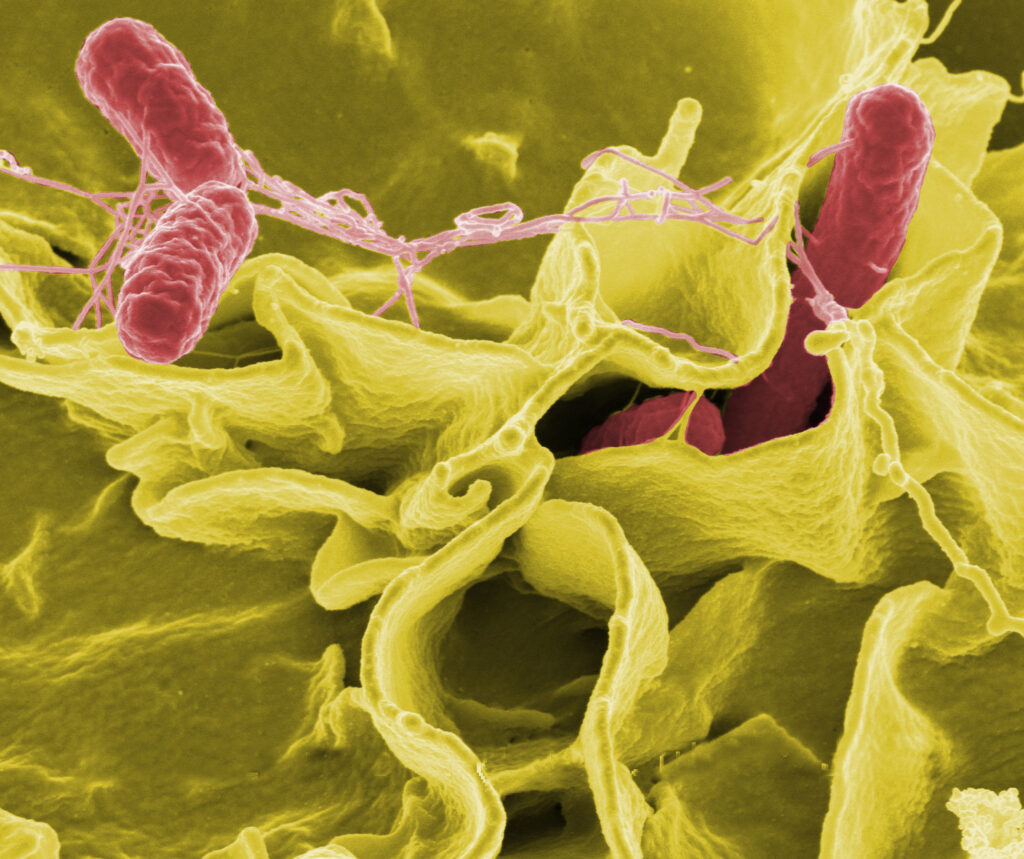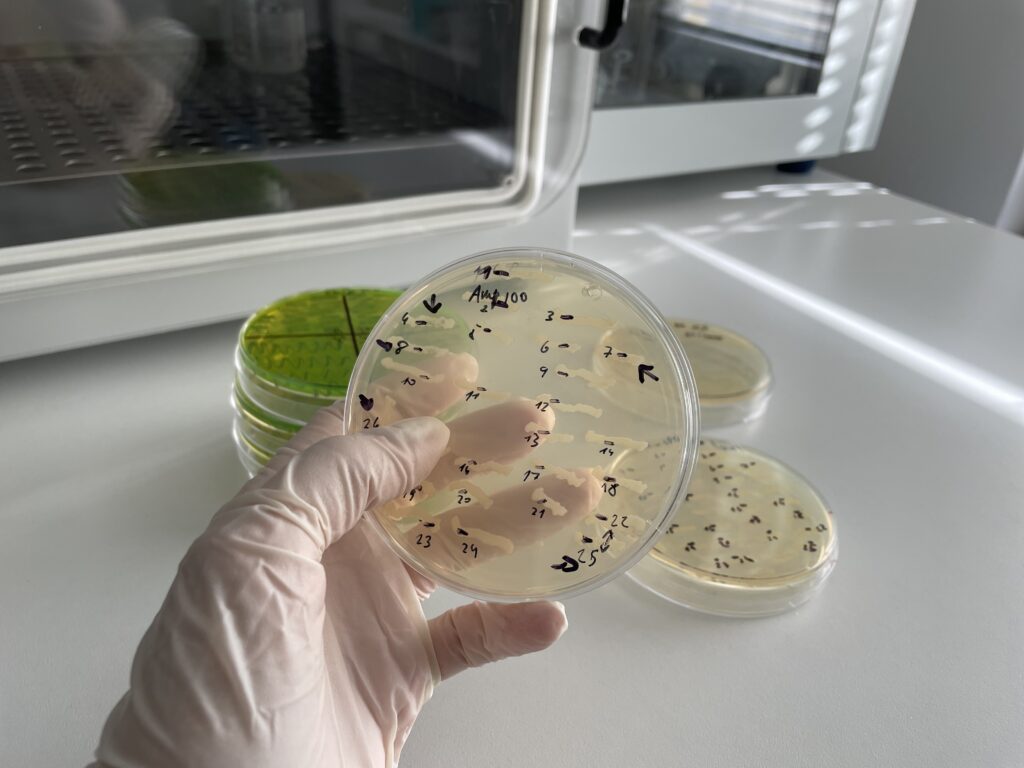Bacterial Virulence
ČERNÝ LAB
How can genetically identical bacteria act differently yet cooperate to cause one disease?
We aim to understand the molecular mechanisms underlying interactions between pathogenic bacteria and their host. As a model, we use Salmonella enterica serovar Typhimurium, which typically causes self-limiting diarrheal disease in humans but can also serve as a model for studying typhoid fever under laboratory conditions. Salmonella is one of the leading causes of diarrheal diseases worldwide and contributes to significant economic losses.

Focus of Research

Our research aims to understand how intracellular Salmonella modifies host cells to create a replicative niche, how the individual bacteria cooperate to spread between host cells, and how the host immune system restricts infection.
- How Salmonella survives in host cells?
- How individual bacteria cooperate?
- How does the host immune system respond?
Our Publications
A fully automated morphological analysis of yeast mitochondria from wide-field fluorescence images
Depletion of calpain2 accelerates epithelial barrier establishment and reduces growth factor-induced cell scattering
Comparison of holotomographic microscopy and coherence-controlled holographic microscopy
Our Team
Meet the members of our Laboratory of Bacterial Virulence